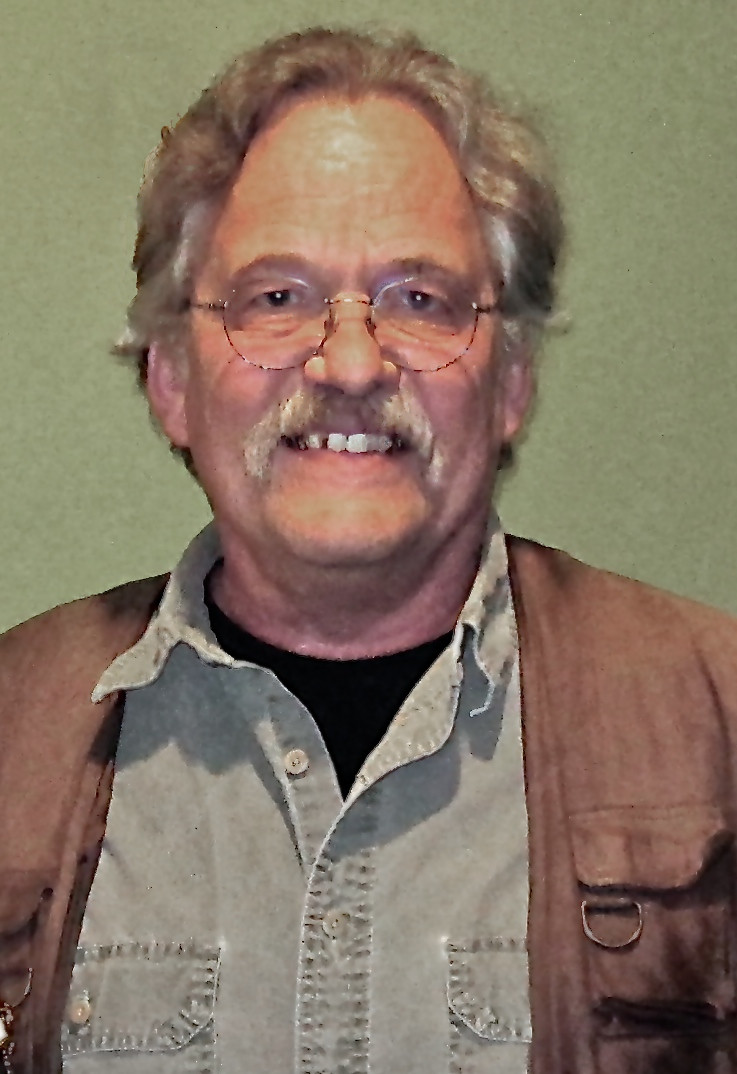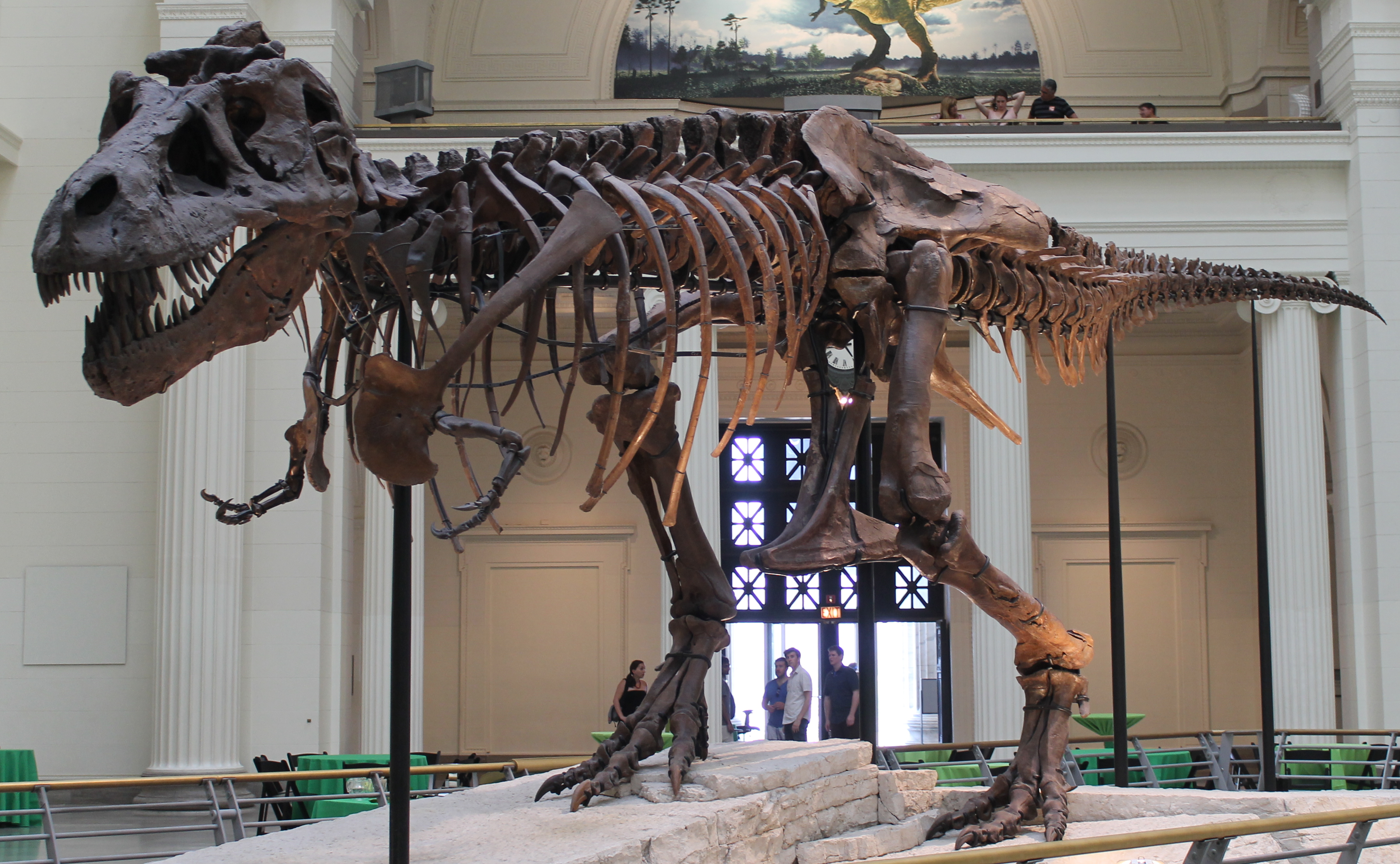Peter Larson (other) on:
[Wikipedia]
[Google]
[Amazon]
 Peter Lars Larson (born 1952) is an American fossil expert and president of the
Peter Lars Larson (born 1952) is an American fossil expert and president of the
 Larson founded what eventually became the Black Hills Institute in 1974. Partners Robert Farrar and (Larson's brother) Neal Larson later joined the company. In 1990, Larson led the excavation of the '' Tyrannosaurus rex'' skeleton later named " Sue". With only a bachelor's degree in geology, Larson has written and co-authored numerous publications on dinosaurs, has excavated more ''T. rex'' skeletons than any paleontologist, and his organization's work on excavation and preparation of fossils has been recognized by paleontologists Robert Bakker, Philip Currie, Phillip Manning, and
Larson founded what eventually became the Black Hills Institute in 1974. Partners Robert Farrar and (Larson's brother) Neal Larson later joined the company. In 1990, Larson led the excavation of the '' Tyrannosaurus rex'' skeleton later named " Sue". With only a bachelor's degree in geology, Larson has written and co-authored numerous publications on dinosaurs, has excavated more ''T. rex'' skeletons than any paleontologist, and his organization's work on excavation and preparation of fossils has been recognized by paleontologists Robert Bakker, Philip Currie, Phillip Manning, and
Collaborator Profile
University of Manchester Paleontology *
Black Hills Institute of Geological Research Inc. website
* ''Part 1: Wagon Ho'' , Interview by Bernie Harberts with Pete and Neal Larson {{DEFAULTSORT:Larson, Peter 1952 births Living people American paleontologists People from Pennington County, South Dakota Businesspeople from South Dakota South Dakota School of Mines and Technology alumni People from Mission, South Dakota
 Peter Lars Larson (born 1952) is an American fossil expert and president of the
Peter Lars Larson (born 1952) is an American fossil expert and president of the Black Hills Institute of Geological Research
The Black Hills Institute of Geological Research, Inc. (BHI) is a private corporation specializing in the excavation and preparation of fossils, as well as the sale of both original fossil material and museum-quality replicas. Founded in 1974 and b ...
. He led the team that excavated " Sue", one of the largest and most complete specimen of '' Tyrannosaurus rex'' found to date, and has published numerous scientific and popular works on dinosaur paleontology. He is criticized by paleontologists for his commercial enterprises and support of private collections.
Early life and education
Peter Larson grew up on a ranch nearMission, South Dakota
Mission is a city on the Rosebud Indian Reservation in northern Todd County, South Dakota, United States. The population was 1,156 at the 2020 census.
Mission is home of the Sinte Gleska University. It is the largest incorporated community in ...
. He began rock hunting at the age of four on his parents' ranch. He attended the South Dakota School of Mines to study paleontology. He graduated with a bachelor's degree in 1974. Shortly after graduating college he started Black Hills Minerals.
Career
 Larson founded what eventually became the Black Hills Institute in 1974. Partners Robert Farrar and (Larson's brother) Neal Larson later joined the company. In 1990, Larson led the excavation of the '' Tyrannosaurus rex'' skeleton later named " Sue". With only a bachelor's degree in geology, Larson has written and co-authored numerous publications on dinosaurs, has excavated more ''T. rex'' skeletons than any paleontologist, and his organization's work on excavation and preparation of fossils has been recognized by paleontologists Robert Bakker, Philip Currie, Phillip Manning, and
Larson founded what eventually became the Black Hills Institute in 1974. Partners Robert Farrar and (Larson's brother) Neal Larson later joined the company. In 1990, Larson led the excavation of the '' Tyrannosaurus rex'' skeleton later named " Sue". With only a bachelor's degree in geology, Larson has written and co-authored numerous publications on dinosaurs, has excavated more ''T. rex'' skeletons than any paleontologist, and his organization's work on excavation and preparation of fossils has been recognized by paleontologists Robert Bakker, Philip Currie, Phillip Manning, and Jack Horner Jack Horner may refer to:
*''Little Jack Horner'', a nursery rhyme
People
* Jack Horner (baseball) (1863–1910), American professional baseball player
*Jack Horner (journalist) (1912–2005), Gordon John Horner, Minnesota sportscaster
* Jack B. H ...
for its quality. He was one of the first to work with ''T. rex'' bone pathologies, has worked to uncover sexual dimorphism in the chevron length of ''T. rex'', and argues that several juvenile ''T. rex'' skeletons actually represent a distinct genus, ''Nanotyrannus''.
In 1992, Larson's team helped to discover second largest '' Tyrannosaurus rex'' Stan
Stan or STAN may refer to:
People
* Stan (given name), a list of people with the given name
** Stan Laurel (1890–1965), English comic actor, part of duo Laurel and Hardy
* Stan (surname), a Romanian surname
* Stan! (born 1964), American author ...
. Larson, along with paleontologist Kenneth Carpenter, edited the scholarly text ''Tyrannosaurus Rex, the Tyrant King''. Larson and his ex-wife Kristin Donnan wrote the book ''Rex Appeal,'' which relates the story of how the U.S. Government took possession of the "Sue" ''T. rex'' skeleton following its excavation, as well as the scientific work Larson was doing at the time. The pair also wrote ''Bones Rock!'', an acclaimed children's book about the history of paleontology and requirements on how to become a paleontologist.
In 2013 Larson and colleagues began excavating at a site located in Wyoming, US containing the remnants of three nearly complete skeletons of '' Triceratops.'' They have been involved in many excavations of notable fossils, and their work—both real skeletons and casts—are mounted and displayed in museums on several continents.
Federal lands dispute
In 1992, an actingU.S. Attorney
United States attorneys are officials of the U.S. Department of Justice who serve as the chief federal law enforcement officers in each of the 94 U.S. federal judicial districts. Each U.S. attorney serves as the United States' chief federal c ...
led about 35 F.B.I. agents and 20 National Guardsmen on a raid on the Black Hills Institute of Geological Research, Larson's company. The federal agents seized the skeleton of Sue, along with other fossils and records. Larson and associates believed they were excavating "Sue" on private land, and had paid the owner $5,000 for the fossil, before its complete excavation and before its scientific attributes were known. However, the U.S. Attorney charged that the fossil had been illegally taken from land under Federal administration, because the deeded land fell within the borders of a Native American reservation and the parcel itself was held in "trust" by the Bureau of Indian Affairs
The Bureau of Indian Affairs (BIA), also known as Indian Affairs (IA), is a United States federal agency within the Department of the Interior. It is responsible for implementing federal laws and policies related to American Indians and A ...
for the benefit of its Native landowner. This provision was understood by both parties, but was not relevant at the time of excavation, since fossils, like gravel or oil, could be "severed" from the land. Owners of land held in trust could sell severable resources, but required federal oversight to sell real estate. In 1994, a Federal court changed precedent and made an unforeseen ruling, calling "Sue" part of the real estate and therefore claiming that the landowner should have received permission to sell the fossil. Although the sale of the fossil was claimed to be legitimate at the time it occurred, it was vacated by the new ruling, and "Sue's" ownership reverted to the landowner. After the sale to the Field Museum
The Field Museum of Natural History (FMNH), also known as The Field Museum, is a natural history museum in Chicago, Illinois, and is one of the largest such museums in the world. The museum is popular for the size and quality of its educational ...
, the landowner received $7.6 million; Chapter 12 "Everything Changed that Day". Larson's company received no compensation, even though it had expended upwards of $1 million in excavation and preparation of the fossil.
Following a subsequent trial on "charges mostly related to trafficking in fossils" unrelated to the "Sue" ''T. rex'' find, Larson was convicted of two felonies and two misdemeanors. Most of the other were dismissed, and the felonies—which involved customs reporting—were fraught with controversy, as government witnesses had categorized Larson's actions as lawful. Richard Battey
Richard Howard Battey (October 16, 1929 – May 6, 2017) was a United States district judge of the United States District Court for the District of South Dakota.
Education and career
Battey was born in Aberdeen, South Dakota. After attending ...
, the judge who refused to recuse himself several times during the highly publicized case, sentenced Larson to two years in federal prison, although the convictions would normally have resulted in probation. Battey enhanced the sentence so that Larson served time as if he had been convicted of more crimes than he was.
In interviews after the case, jurors stated that 11 of 12 initial votes were for complete acquittal.
Legacy
Larson has developed a controversial standing in his field. On one hand, he fought for fair fossil-collecting regulations on public lands, and worked with government committees to find common ground as a representative of professional paleontologists, as well as publishing scientific papers. On the other hand, some academic paleontologists object to any organization's commercial selling of fossils, and find Larson's company to be the prime example of this activity. The difference of opinion about the benefits and drawbacks of selling fossils has been a topic for more than 100 years, thanks to the rich history of collaborations between academic and professional paleontologists throughout the 20th century. These collaborations created the primary collections that introduced the public to dinosaurs, but also introduced the idea of fiscal value to resources that some say fall into the public domain. Those academics who reject the practice claim that the high prices that fossils like "Sue" bring in the marketplace prevent public institutions from competing, as private landowners see their fossils as "crops" and are less likely to donate them. Larson has gained supporters in academia, including John Ostrom of Yale University and Robert Bakker, Curator of Paleontology for the Houston Museum of Natural Science. Himself a colorful and sometimes controversial figure, Bakker has backed Larson as a responsible paleontologist.Selected works
Journal articles
*Larson, P and Frey, E. "Sexual Dimorphism in the Abundant Upper Cretaceous Theropod, T. rex." ''Journal of Vertebrate Paleontology 12'', Abstract 96, 3 September 1992. *Popular books
*Larson, P. and Donnan, K. "Rex Appeal". Montpelier, VT: Invisible Cities Press, 2002. *Larson, P. and Carpenter, K. "Tyrannosaurus Rex, the Tyrant King (Life of the Past)". Indiana University Press, 2008. *See also
*Sue Hendrickson
Susan Hendrickson (born December 2, 1949) is an American explorer and fossil collector. Hendrickson is best known for her discovery of the remains of a ''Tyrannosaurus rex'' in South Dakota on August 12, 1990 in the Cheyenne River Reservation. H ...
, discoverer and namesake of the ''T. rex'' "Sue"
* Dinosaur renaissance
* Paleontology in South Dakota
References
External links
Collaborator Profile
University of Manchester Paleontology *
Black Hills Institute of Geological Research Inc. website
* ''Part 1: Wagon Ho'' , Interview by Bernie Harberts with Pete and Neal Larson {{DEFAULTSORT:Larson, Peter 1952 births Living people American paleontologists People from Pennington County, South Dakota Businesspeople from South Dakota South Dakota School of Mines and Technology alumni People from Mission, South Dakota